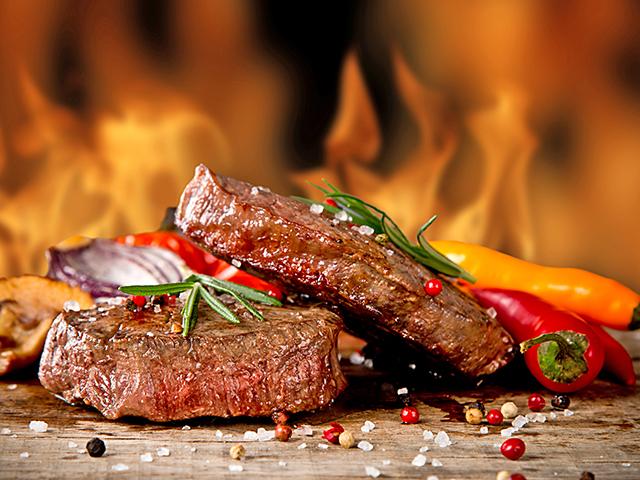Chicken Poised to Make Gains
Higher Meat Prices Will Favor Chicken Over Beef
As retail meat prices continue to climb, consumers are likely to trade from beef to more poultry consumption as the year progresses. The main driver in the switch will be inflation and wages that aren't rising fast enough to keep pace with increased costs of living.
That comes from a new report by CoBank's lead economist on animal protein, Brian Earnest. He notes that demand for animal protein has remained high, especially for beef -- even as prices have climbed. But Earnest believes that as retail meat prices continue to go up, some shifts in buying behavior are likely. Chicken will be best positioned to take advantage of those shifts.
Earnest told DTN that a 15% across-the-board increase in retail meat prices was reported by USDA in March for the first quarter of 2022. For beef, that increase adds up to about $1 more per pound for the consumer; for chicken, it will amount to about 30 cents more per pound.
"The typical response out of poultry producers has been that if times are good, they expand. But they are conscious of the higher costs for inputs," said Earnest. He added he's been told poultry companies don't have the labor they need for plants.
MORE PRICE INCREASES COMING
Labor, fuel and feed prices are only part of the greatly increased cost of producing meat being seen across agriculture today. Those increases, Earnest said, have still not been fully pushed through to consumers by retailers. He thinks there is a strategy behind that.
P[L1] D[0x0] M[300x250] OOP[F] ADUNIT[] T[]
"We are really just starting to see that increase push through in any significant way," Earnest said. "When we look at retail prices, clearly, they've gone up. But if we look at the producer price index, it has risen substantially more than the increases we're seeing on the retail shelves. This suggests that retailers continue to be reluctant to pass through all of that higher cost."
Earnest said he thinks this reluctance is tied to the pandemic and a desire among retailers to hold onto their increased share of meat sales now that food service is back up and running.
"Retailers want to retain the business they gained in 2020 and 2021," he explained. "Meat sales are one way they can hold onto that, and I believe this is why they aren't passing along all the price increases, so they can continue to hold that business."
HOME GRILLING ENTHUSIASM
The economist noted that consumers have invested significantly in being able to replicate their favorite restaurant meals at home with expensive grills and smokers. With more quality beef available to them at retail today, he says this home-use trend may continue to be strong.
"I was at a conference this week, and it seemed like every conversation I had included at least one person talking about their new grill or meat probe. They'd say they could cook a better steak than they could get at a restaurant. Time will tell us whether this is 'sticky behavior,' continuing well into the future.
"As we see folks going back to normal activities, I suspect we'll see more trade-offs for convenience meals," he added. "Also, we need to remember that going out, that dining experience, is also social. Before, we were forced to our backyards and patios to have those interactions, but now we can go out and meet in a restaurant. It will be interesting to see how many of our pandemic-based changes continue as we move into the future."
DEMAND HOLDING FOR BEEF
Overall, Earnest says it's important to note that even with increases in price, demand for beef has held strong. And that is counter to what has happened in the past.
"Typically, higher prices erode consumption," he noted. "From 2000 to 2010, that is what happened. Retail beef prices rose about 7% a year between 2009 and 2015, and per capita beef consumption declined more than 11%, going from 61 pounds to 54 pounds.
"From 2017 to 2019, retail beef prices rose just 2% annually. Since 2020, however, consumption for beef has not declined, even with all-time highs and increases at more than 20% from 2019 to 2020. Consumption actually went up 1.4% during this time, and per capita beef consumption is now at 58.4 pounds, a 8.6% increase since 2015."
Earnest added that the same scenario has played out for chicken. But he noted that for 2022 and 2023, USDA is forecasting a small decline in per capita consumption, largely tied to inflation and higher overall livestock prices.
Victoria Myers can be reached at vicki.myers@dtn.com
Follow her on Twitter @myersPF
(c) Copyright 2022 DTN, LLC. All rights reserved.






